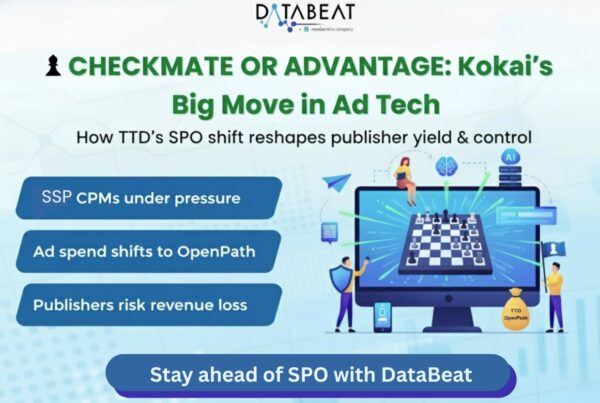
In the ever-evolving landscape of digital marketing, efficiency and accuracy are critical for setting up and running successful ad campaigns. For marketers and advertisers, user engagements and conversion tags optimization along with performance management can get out of hand pretty soon when there is more than one platform and tracking code involved. That is where Google Tag Manager (GTM) steps in – to simplify everything.
GTM is a powerful and free of charge tool that allows marketers to implement and maintain marketing tags with no need for direct coding on the website/mobile app. By eliminating the need to rely on developers constantly, GTM can make rapid changes, improve campaign efficiency, and maintain tracking control single-handedly.
What is Google Tag Manager (GTM) ?
- Google Tag Manager is a tag management system (TMS) that stores tags used for marketing and analytics in one central location.
- Instead of being required to set individual tracking codes in a website’s source code, GTM allows for tags to be added and controlled with an easy-to-use interface. Once the GTM container is deployed on the site, all changes can be controlled through the GTM dashboard without constantly having to update code.
- A “tag” in GTM is minimal code that sends data to third-party sites such as Google Analytics, Google Ads, Facebook, or other ad and analytics sites. GTM has built in tag templates that facilitates tracking across these platforms. GTM simplifies adding and modifying these tags without having to change the site’s underlying code.
Key Benefits of Using Google Tag Manager for Ad Tracking
-
Simplified Tag Deployment and Management
Marketers would also need to rely on the developers to apply or modify tracking codes, which would be time-consuming and also lead to errors. GTM does away with such reliance by offering a drag-and-drop interface through which marketers can control, edit, and test tags in real-time. Advertisers can create and modify tags for different ad platforms (like Google Ads, Facebook, LinkedIn, etc.) within GTM itself, so that the right tracking mechanism is ready without having to touch the site backend.
-
Improved Campaign Efficiency and Flexibility
GTM simplifies deployment of tracking solutions for any number of marketing objectives, from user behavior measurement and conversion tracking to dynamic remarketing and retargeting.
When there are no boundaries on how tags can be modified, almost every advertiser’s dream comes true because campaign goals can be easily achieved without any technical capabilities. Marketers can base their techniques on tracked results and improve them for better efficiency.
-
Error Reduction and Tag Consistency
Manual tracking code deployment can incur more mistakes, which may result in lost opportunities, wrong conversions, or lost data. GTM eliminates the risk since it offers native preview and debugging abilities that allow one to preview tag configurations before live publishing.
This process ensures that tags are firing properly, delivering more accurate and consistent data for campaign analysis.
-
Faster Website Load Times
Used improperly or in excess, tags can slow a site down, reducing user experience and search engine performance. GTM improves page speed by managing when and how tags fire, preventing unnecessary page load time delays.
Using GTM, the marketers can build conditions on when to trigger particular tags such that only required tags run when they are required to.
-
Centralized Control Across Multiple Platforms
Typically, a marketer will execute campaigns across several channels, and each one will have a tracking tag of its own. GTM provides a single platform where all tracking codes for several channels are stored and managed in one dashboard.
This level of management provides consistency between different campaigns and media so that each medium can receive the information it needs to accurately report performance.
How GTM Enhances Campaign Management
-
Faster Response to Campaign Changes
When launching a new campaign or adjusting an existing one, timing is critical. GTM allows advertisers to quickly modify or add tracking tags without the need for website updates. This capability ensures that tracking remains aligned with new campaign goals, making it easier to pivot or experiment with different ad strategies.
-
Enhanced Conversion Tracking and Attribution
Accurate conversion tracking is essential for measuring the success of ad campaigns. GTM allows advertisers to set up conversion tracking tags effortlessly, ensuring that critical actions (such as form submissions, purchases, or downloads) are tracked accurately.
With GTM, marketers can fine-tune attribution models and ensure that data is collected and analyzed correctly, helping them make informed decisions about budget allocation and campaign optimization.
-
Seamless Integration with Analytics and Ad Platforms
GTM integrates seamlessly with platforms like Google Analytics, Google Ads, Facebook Pixel, and more, allowing advertisers to send precise data to multiple tools simultaneously. This ensures that campaign performance is tracked comprehensively, giving marketers a unified view of user behavior across channels.
Getting Started with GTM: A Quick Overview
For those new to google tag manager, the process involves:
- Creating a GTM Account – Set up a new account and create a container for the website or app.
- Installing the GTM Code – Add the GTM container snippet to the website’s code, which only needs to be done once.
- Configuring Tags, Triggers, and Variables – Define which tags should fire and under what conditions. Trigger is a term used to define under what conditions a tag should fire. Variables store dynamic information that tags and triggers can use to evaluate conditions or pass data.
- Testing and Publishing – Use the preview and debug mode to test tags before making them live.
Final Thoughts
Google Tag Manager offers advertisers an efficient, flexible, and secure way to manage ad tracking and campaign management. By reducing the dependency on developers, minimizing errors, and providing centralized control, GTM empowers marketers to stay agile in an increasingly dynamic digital environment.
For advertisers looking to optimize their ad performance while maintaining control over their tracking strategies, adopting GTM is a strategic move that can streamline operations and enhance the accuracy of campaign data.
How DataBeat can Help
- Databeat can help with the management and implementation of GTM by ensuring that all tracking tags are set up properly. We also facilitate bespoke tracking of various user engagements including conversions across different platforms (meta ads, google ads, DV360, LinkedIn ads) clicks, form fills, video views, and other relevant on-page actions based on your needs. At Databeat, we ensure that advertisers receive high-quality data over time by continuously researching new developments & releases, reviewing tags, filling in missing elements, and improving tracking configurations.









